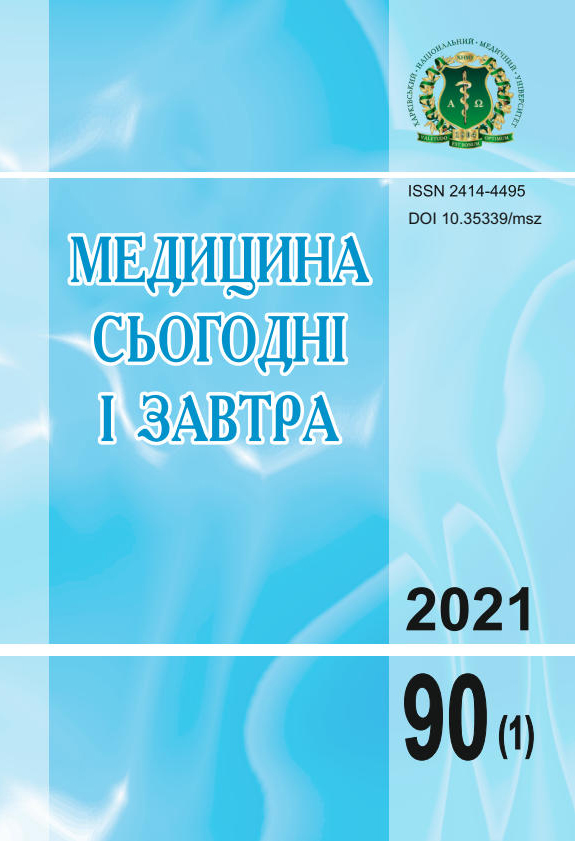Abstract
In Press
For many decades, epilepsy has remained a serious medical and social problem that requires constant attention not only from neurologists, psychiatrists, but also from medical psychologists and social workers. The priority in the treatment of epilepsy is not only to prevent seizures, but also to help the patient maintain social functioning and restore quality of life. Achieving drug remission of epileptic seizures is only part of the management of the disease, it is necessary to help restore the patient's psychosocial adaptation and form a correct understanding of their disease and related limitations in daily functioning. A comprehensive examination which involved 65 patients with epilepsy of both sexes aged 18–40 years was conducted in compliance with the principles of bioethics and medical deontology. The mean age of the subjects ranged from (34.0±1.6) years, duration of the disease in patients did not exceed 10 years. All subjects had disorders of the emotional sphere of non-psychotic level, which were recorded in the interictal period of the disease. Selected comprehensive system of correction of affective disorders in patients with epilepsy helped to achieve following results, especially: reduction of anxiety and depressive disorders (73.5 %), reducing the level of motor and ideational inhibition (65.2 %), reducing the intensity and duration of depressive affect (72.5 %), restoration of interest in activities that previously interested patients (69.5 %), improvement of psychosocial adaptation (81.3 %), managed to achieve the transition of maladaptive types of attitudes to the disease to adaptive (66.5 %) and improve quality of life (83.2 %). A study of affective disorders in patients with epilepsy allowed us to make following conclusions: epilepsy is often combined with affective disorders. Depressive disorders are more common among all affective disorders. Epilepsy and affective disorders interact with each other and complicate clinical prognosis.
Keywords: epilepsy, affective disorders, rehabilitation, psychoeducation.
References
Marienko, L. B., Litovchenko, T. A., & Dubenko, A. Ye. (2018). Novi klasyfikatsii epilepsii ta epileptychnykh napadiv: shliakhy vprovadzhennia v Ukraini [New classifications of epilepsy and epileptic seizures: ways of implementation in Ukraine]. Mizhnarodnyi nevrolohichnyi zhurnal – International Journal of Neurology, 1(94), 14–18. Retrieved from: https://is.gd/ms0xGb [in Ukrainian].
Nosov, S. H., & Drobot, I. H. (2017). Zakonomirnosti rozvytku depresii pry epilepsii ta osoblyvosti likuvannia [The patterns of development of depression in epilepsy and treatment]. Visnyk epileptolohii – Bulletin of Epileptology, 1(47–48), 23–32 [in Ukrainian].
Kanner, A. M., Schachter, S. C., Barry, J. J., Hesdorffer, D. C., Mula, M., Trimble, M., et al. (2014). Corrigendum to “Depression and epilepsy: epidemiologic and neurobiolog-ic perspectives that may explain their high comorbid occurrence”. [Epilepsy Behav. 24/2 (2012), 156–168]. Epilepsy & Behav., 32, 170. DOI: 10.1016/j.yebeh.2013.12.017.
Dubenko, A. Ye., & Korostii, V. I. (2011). Diahnostika i farmakoterapiia nepsikhoticheskikh psikhicheskikh rasstroistv [Diagnostics and pharmacotherapy of non-psychotic mental disorders]. Zdorovia Ukrainy – Health of Ukraine, (16), 54–57 [in Russian].
Mehndiratta, P., & Sajatovic, M. (2013). Treatments for patients with comorbid epilepsy and depression: a systematic literature review. Epilepsy & Behav., 28(1), 36–40. DOI: 10.1016/j.yebeh.2013.03.029, PMID: 23651914.
De Lima, C., de Lira, C. A., Arida, R. M., Andersen, M. L., Matos, G., de Figueiredo Ferreira Guilhoto, L. M. et al. (2013). Association between leisure time, physical activity, and mood disorder levels in individuals with epilepsy. Epilepsy & Behav., 28(1), 47–51. DOI: 10.1016/j.yebeh.2013.03.016. PMID: 23657213.
Ribot, R., Ouyang, B., & Kanner, A. M. (2017). The impact of antidepressants on seizure frequency and depressive and anxiety disorders of patients with epilepsy: Is it worth investigating? Epilepsy & Behav., 70(Pt. A), 5–9. DOI: 10.1016/j.yebeh. 2017.02.032. PMID: 28407526.
Brodie, M. J., Barry, S. J., Bamagous, G. A., Norrie, J. D., & Kwan P. (2012). Patterns of treatment response in newly diagnosed epilepsy. Neurology, 78(20), 1548–1554. DOI: 10.1212/WNL.0b013e3182563b19. PMID: 22573629. PMCID: PMC3348850.
Barragan, E. (2012). Epilepsy and related psychiatric conditions. In Rey, J. M. (Ed.). IACAPAP e-Textbook of Child and Adolescent Mental Health. Geneva: International Association for Child and Adolescent Psychiatry and Allied Professions (13 p.).

